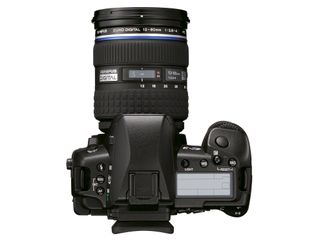Olympus E3 makes it into space
Next Space Shuttle mission to ISS will carry space-ruggedised D-SLR

The next launch of the Space Shuttle Discovery will carry Dr Koichi Wakata, a Japanese Aerospace Exploration Agency (JAXA) astronaut, along with a space-safe version of the Olympus E-3 D-SLR and Zuiko Digital lenses.
The mission, which Olympus is calling the Olympus Space Project to celebrate its 90th birthday, will involve Wakata snapping the Earth from outer space.
The photos, taken from Japan's first manned ISS facility called the Kibo module, will then be posted on Olympus' web sites and shown at photo exhibitions.
Splash-proof in space
The E3 was chosen because Olympus' flagship model was created "to survive the toughest shooting environments", although its splash- and dust-proof magnesium alloy body is unlikely to be tested on the ISS (unless astronauts are particularly sloppy about their house-keeping).
To create a safe facility that supports extended stays, equipment heading up to the International Space Station must pass vigorous safety tests.
For example, sharp edges are not permitted and materials must omit very little volatile gas. Certification by JAXA and NASA requires all equipment to pass various inspections such as a gas-emission and pressure-reduction test.
Get daily insight, inspiration and deals in your inbox
Get the hottest deals available in your inbox plus news, reviews, opinion, analysis and more from the TechRadar team.
The E-3 digital SLR and its accessories - Zuiko 11-22mm and 50-200mm lenses, two battery holders and a remote control - passed all examinations with flying colours.
The Olympus E3 and Dr Wakata will fly on mission STS-119 of the Space Shuttle, due to launch on March 12.
Mark Harris is Senior Research Director at Gartner.
Most Popular

